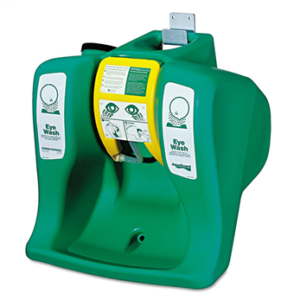FIRE ALARM SYSTEM
- Brand: FIRE SOLUTION TECHNOLOGY
₵0.00
In stock
FIRE ALARM SYSTEMS
A fire alarm system is a critical component of fire safety infrastructure designed to detect, notify, and alert occupants and emergency responders about the presence of a fire. These systems are integral to protecting lives, property, and assets by providing early warning in the event of a fire emergency. Understanding their components, operation principles, and installation specifics is essential for comprehending their role in fire prevention and life safety.
1. **Components and Configuration**
– **Detection Devices**: Include smoke detectors, heat detectors, flame detectors, and gas detectors that monitor changes in the environment indicative of a fire.
– **Control Panel**: Acts as the central hub to receive signals from detection devices, process information, and activate alarms based on predefined settings.
– **Notification Devices**: Audible alarms (sirens, horns, bells) and visual indicators (strobe lights, flashing lights) placed strategically to alert occupants and emergency personnel.
– **Communication Devices**: Interface with external monitoring stations, emergency services, and building management systems for coordinated response.
– **Power Supply**: Incorporates backup power sources (batteries or generators) to ensure continuous operation during electrical outages or emergencies.
2. **Types of Fire Alarm Systems**
– **Conventional Fire Alarm Systems**: Utilize zones to divide areas of detection, providing general location information of fire incidents within a building.
– **Addressable Fire Alarm Systems**: Assign unique addresses to each detection device, offering precise location identification and detailed information on the status of each device.
– **Wireless Fire Alarm Systems**: Employ radio frequency (RF) communication to transmit signals between detection devices, control panels, and notification devices, eliminating the need for extensive wiring.
3. **Operation and Functionality**
– **Detection**: Sensors detect smoke, heat, flames, or gases associated with fires, activating the alarm system to initiate emergency response procedures.
– **Notification**: Audible and visual alarms alert occupants and emergency responders, prompting evacuation and fire suppression efforts.
– **Monitoring and Control**: Centralized control panels monitor system status, conduct periodic tests, and provide real-time information to facilitate timely decision-making.
### Advantages of Fire Alarm System
A fire alarm system offers several advantages that contribute to its effectiveness in fire detection, notification, and life safety:
1. **Early Detection**: Provides early warning of fire incidents, allowing occupants to evacuate safely and emergency responders to initiate timely intervention.
2. **Rapid Response**: Activates alarms instantly upon detection of fire-related conditions, minimizing response times and reducing the spread of flames and smoke.
3. **Comprehensive Coverage**: Monitors multiple areas and zones within a building, ensuring comprehensive detection and notification capabilities throughout the premises.
4. **Integration Capabilities**: Interfaces with other building systems (e.g., HVAC, access control) to enhance emergency response coordination and facility management.
5. **Reliability**: Incorporates redundant components, backup power supplies, and self-testing features to ensure system reliability and operational readiness.
6. **Scalability**: Easily expandable to accommodate changes in building layout, occupancy, and fire protection requirements, ensuring long-term suitability and effectiveness.
### Importance of Fire Alarm System
The significance of a fire alarm system lies in its critical role in fire prevention, emergency preparedness, and life safety initiatives:
1. **Life Safety**: Protects occupants, employees, and visitors from the immediate dangers of fire by providing early warning and facilitating safe evacuation procedures.
2. **Property Protection**: Minimizes property damage and financial losses by enabling prompt fire detection and intervention to mitigate the impact of fire incidents.
3. **Regulatory Compliance**: Meets fire safety codes, standards, and regulations mandated by local authorities, insurance providers, and building occupancy requirements.
4. **Risk Management**: Enhances overall risk management strategies by reducing the likelihood of fire-related injuries, fatalities, and operational disruptions.
5. **Insurance Requirements**: Satisfies insurance policy requirements for fire protection measures, potentially reducing premiums and liabilities associated with fire incidents.
6. **Emergency Planning**: Integrates seamlessly into emergency response plans, enabling coordinated efforts among occupants, emergency responders, and building management.
### Uses of Fire Alarm System
Fire alarm systems are utilized across various industries and applications to ensure fire safety and protect against fire-related risks:
1. **Commercial Buildings**: Offices, retail stores, hotels, and shopping centers to safeguard employees, customers, and valuable assets.
2. **Industrial Facilities**: Manufacturing plants, warehouses, and distribution centers requiring robust fire detection and notification systems for hazardous environments.
3. **Residential Complexes**: Apartment buildings, condominiums, and residential communities providing early warning and evacuation guidance to residents.
4. **Educational Institutions**: Schools, colleges, and universities implementing fire alarm systems to protect students, faculty, and educational facilities.
5. **Healthcare Facilities**: Hospitals, clinics, and nursing homes ensuring fire safety compliance and protecting patients, staff, and medical equipment.
6. **Government Buildings**: Offices, municipal facilities, and public institutions securing governmental operations and civic resources against fire risks.
### Conclusion
In conclusion, a fire alarm system is a critical component of fire safety infrastructure designed to detect, notify, and alert occupants and emergency responders about fire emergencies promptly. Its advanced detection capabilities, rapid notification features, and integration capabilities contribute to effective fire prevention, emergency preparedness, and life safety initiatives in diverse environments. By investing in reliable fire alarm systems, organizations and individuals can mitigate fire risks, comply with regulatory requirements, and protect lives, property, and assets from the devastating impact of fire incidents. Continued advancements in fire detection technology and system integration underscore the importance of fire alarm systems in enhancing overall fire safety and emergency response capabilities worldwide.
Only logged in customers who have purchased this product may leave a review.
Please Login To Download Attachment
General Inquiries
There are no inquiries yet.









Reviews
There are no reviews yet.